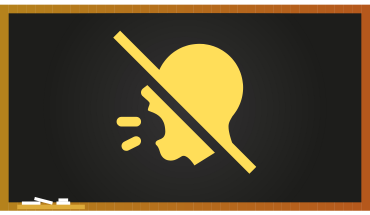This story was originally published in the March 23 print issue.
In mid-February, Mason was praised for turning the average classroom on its head. The school was recognized for embracing the concept of a flipped classroom – a space designed to foster student engagement and team learning.
The school was one of three winners in the 2015 EDUCAUSE Learning Initiative video competition. ELI, who hosts the annual contest with the New Media Consortium, is a non-profit that uses information technology to improve higher education. Each year, ELI and NMC compile a list of IT trends at colleges, and schools submit videos that demonstrate creative use of one of the technologies. The items for 2015 were: flipped classrooms, Bring Your Own Device, Makerspaces, wearable technology, adaptable learning technologies and Internet of Things.
Mason won for its use of flipped classrooms, which are essentially rooms with furniture and technology arranged in such a way that encourages students to work in groups as active learners. Round tables fill these rooms, so there is no front nor back of the class and no definite focal point from which a teacher could lecture. Mobility characterizes many of the items in a flipped classroom. The tables have wheels and can also split in half. The chairs move, as will projection screens that come down from the ceiling or up from the tables, planned for Innovation Hall.
Ben McCall, a junior electrical engineering major, said learning in a flipped room is a novel experience.
“Being in the class was a whole new world,” McCall said.
The goal of the room is to make an environment where students become invested in their work.
“The whole thing is, it’s just giving the reins to the students and letting them have a little bit of a say in what they want to learn,” Katherine Pettigrew, an assistant term professor in the College of Science, said.
April Aralar, a junior bioengineering major, said she is less attentive in lectures than in flipped rooms.
“The big difference is active learning versus passive learning,” Aralar said. “I know that I can sit in a lecture and fall asleep, not take notes, be on a laptop, whatever, but it’s really hard to do that in the [alternative], flipped classrooms.”
Mason is expanding the use of these classrooms in an overhaul of the third floor of Innovation Hall. Construction is currently under way, and it is expected to be completed in time for fall classes. According to Kimberly Eby, associate provost of faculty development, regularly scheduled technology updates for the building have a budget of $1.2 million, along with additional money for third floor changes. The renovations coincide with the first student goal of Mason’s strategic plan, “Innovative Learning,” which includes an initiative to make “new and innovative physical and virtual learning spaces.”
Eby said this is an opportunity for Mason “to take what we know about best practices around student learning and student engagement and to build classrooms that give faculty members the flexibility to engage students in individual work and collaborative team-based work.”
According to Eby, these rooms give teachers the opportunity “to capitalize on some of what we’re learning about the science of learning.”
No flipped classrooms are exactly the same, and this variety will be seen in the updated Innovation Hall. A goal is “to build a variety of different kinds of classrooms that afford those kinds of active and collaborative student engagement strategies,” according to Eby. However, she said specific components of the classrooms have become popular among students and teachers. One example is the walls, which, in current classrooms, are whiteboards.
Aralar said she likes the whiteboards because, while working with them, it is easier to know when she has gone off track.
“I like knowing that I’m doing it right, so being able to write up there and the professor validating if I’m getting it right or somebody else coming over and saying, ‘No it’s actually like this,’” Aralar said.
A teacher’s approach in an active learning classroom is very different from the current norm, according to Jason Kinser, associate professor in the School of Physics.
“It’s completely different,” Kinser said. “In a normal classroom, we prepare lectures, you stand on a stage, you tell them everything, and they’re supposed to write it down in their notebooks and do the homework.”
This is not the case in flipped classrooms. Kinser said, instead, a teacher must prepare everything ahead of time. This leaves more time for application and conversation during class. The room then becomes more active, compared to a lecture environment.
McCall said student preparation is also necessary to make the design work.
“I think the attitude behind the flipped class is to do a little more preparation ahead of time, so that when you come in to the classroom you’re ready to hit the ground running with questions and with answers,” McCall said.
The flipped style is not everyone or every class, Pettigrew explained. She said the rooms are only successful when both faculty and students are open to the format.
“You have to have the faculty engaged in teaching that style, and that’s not for all faculty because it’s taking them out of their comfort zones,” Pettigrew said. “It’s a very tricky question because you’ve got to have the faculty who believes in the method and then believes in the course material that could be taught that way. Not everything can be that way.”
She said classes that involve critical thinking and concept mapping are well-suited for flipped rooms, as well as courses for early students.
“I think every student should have one class in a flipped room,” Pettigrew said. “And it really needs to be their freshman or sophomore level so they can still make the decision to get out of college before they are that far in debt.”
Pettigrew also said the active learning environment has the benefit of being similar to the typical workplace.
“We’re in a business meeting,” Pettigrew said of her interactions with students. “We’re having a discussion. Let’s make this two-way to see if you guys are understanding the meat of the information.”
The teamwork is also a key aspect of the workplace, according to McCall, who works for the Naval Research Laboratory.
“It’s the closest thing I’ve had to a collaborative session like we would have at a real job,” McCall said.
Bring Your Own Device is frequently encouraged in flipped classrooms. McCall said BYOD also adds to the real-world feel.
“We were encouraged to use computers, smartphones, any kind of technology, websites we could find,” McCall said. “You could use WolframAlpha, which is a huge math tool, so we’re able to utilize resources and that’s a huge part of working in the working world.”
Pettigrew said computer competency can be a vital part of a student’s education.
“I’m a firm believer that if you are not immersed into your computer, you’re not going to be successful in this world,” Pettigrew said. “Every job requires that.”
“In class,” Pettigrew said, “we’re using it [electronics] as a tool and a resource to go after what we need.”
According to a 2011 Pew Research Center Study, 88% of undergraduates own a laptop. Kinser said if a student is in need of a laptop, the physics department has backups. Eby said she does not anticipate many students lacking the necessary technology to learn in these classrooms.
“In some limited situations, [like] a software engineering class, they may not have it on their own computer or the instructor may not want them to do that,” Eby said. “But a lot of the time they’re just pulling up something in Microsoft office and doing that – like an Excel sheet or a Word document or something like that – or posting something on Blackboard, and they don’t need to have a special program to make that happen.”
Some critical research has surfaced as flipped classrooms become more common. A few studies suggested there is no significant improvement in students who learn in flipped rooms compared to those in lecture halls. Others say the spaces require students to self-teach, and the role of professor is diminished. However, for the past two years, Kinser said he and other colleagues in the physics department have been collecting data that compares student performance in lecture to flipped classes, with optimistic results.
“We’re watching how the students perform as they progress through their four years at Mason and try to get more of a feel for the long term impact of active learning,” Kinser said.
He shared some results of the two years of number collection.
“The average scores for the physics classes in the active learning room are ten to fifteen percent higher on exams than they are for the lecture room,” Kinser said.
Kinser said it is rare for students in lecture halls to improve exam grades as the semester goes on. Students in the flipped rooms, however, “had a 50/50 chance of improving,” he said.
Perhaps most telling of a flipped classroom’s success, Kinser said attendance is almost perfect.
“We’re also seeing a tremendous amount of enthusiasm,” Kinser said. “The attendance rate in the active learning room is close to 100%.”
Kinser said he as seen more students take ownership of their work.
“For students that are A and A+ students, I don’t think the active learning does much,” Kinser said. “They’re already engaged, they already know the stuff, but for the rest of the population, more normal population, the active learning seems to gain enthusiasm and involvement and pride.”
Photo Credit: Erika Eisenacher



